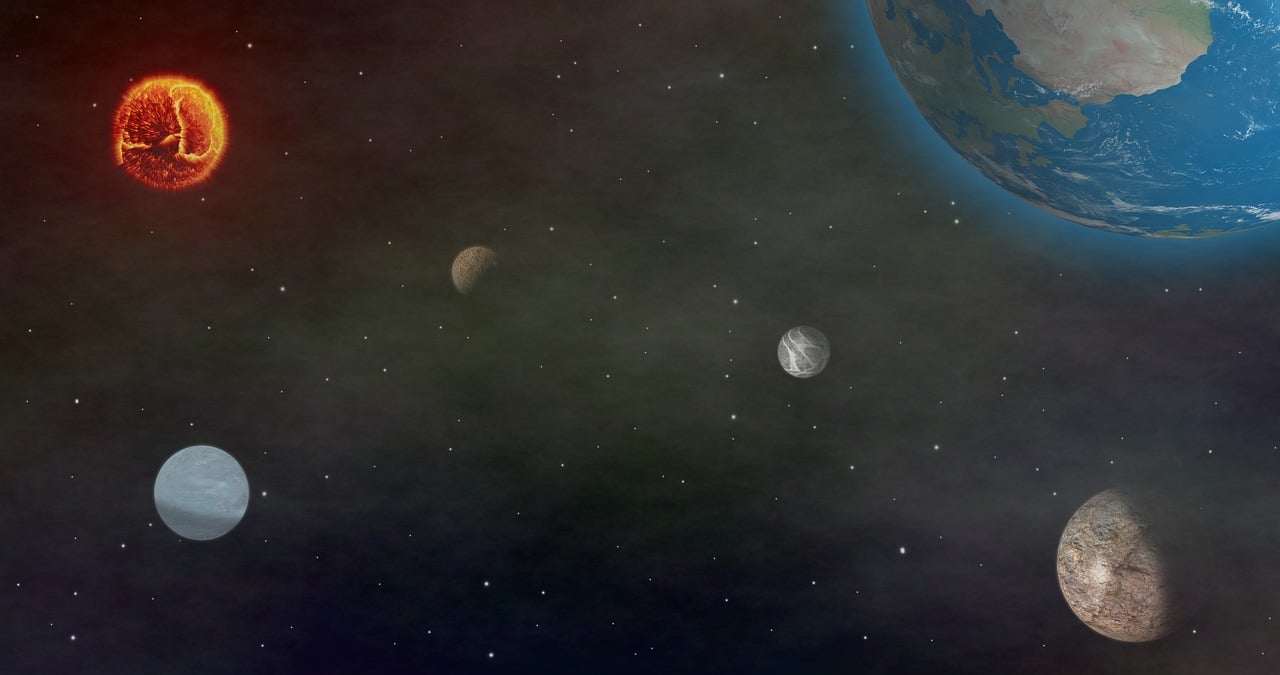While searching for star systems that could harbor life in the universe, scientists have stumbled across a Saturn-sized planet with quite a lot of water in its atmosphere. Now, scientists are studying the water on the hot planet hoping that it will tell the story of the origin of our solar system.
While observing the hot exoplanet called WASP-39b with the Hubble Space Telescope, water on the hot planet was discovered. The planet is located 700 light-years away from Earth. The new study on the exoplanet reveals that the planet houses three times as much water as Saturn.
Scientists also discovered an amount of heavy elements located in the atmosphere. That and the discovered water vapor suggest that at the time it was forming, the large planet was bombarded with metal-rich ice.
According to the scientists, the observations of WASP-39b made the most detailed profile of the atmosphere of an exoplanet ever made. Scientists created this profile after combining observations from Hubble, the Spitzer Space Telescope and the Very Large Telescope.
The planet was initially discovered in 2011.
Another thing that makes WASP-39b interesting is that the star that it orbits is quite similar to our Sun. The planet’s size can be compared to the size of our own Saturn, although, unlike Saturn, it doesn’t have any rings. However, it orbits near to its star, even closer compared to Mercury and our sun. That enables it to complete a revolution in four days. The paper qualifies the temperature in the atmosphere in the neighborhood of 1,400 degrees Fahrenheit.
The water on the hot planet and the metals in its atmosphere suggest that it moved to the inner region of its alien solar system. According to the scientists “WASP-39b formed beyond the snow line in the planet-forming disk of the host star.”
The “snow line” means the distance from a star where the materials of the planet become solid. If this Saturn-sized planet came together beyond that line, the pieces that it’s made of could have been metals which would explain the elements that scientists are finding now. This knowledge about WASP-39b could allow astronomers to comprehend our planetary neighborhood.
“We need to look outward to help us understand our own solar system,” lead investigator Hannah Wakeford said in a statement on Hubble’s website. “Exoplanets are showing us that planet formation is more complicated and more confusing than we thought it was. And that’s fantastic.”
According to Hubble, the launch of the James Webb Space Telescope that is expected next year is likely going to study the origin of the universe and other exoplanets that could help scientists understand WASP-39b and its carbon and oxygen content. The JWST is part of an international collaboration of NASA, the European Space Agency and the Canadian Space Agency.
Given that carbon and oxygen, and other “lighter” elements are located in the atmosphere of WASP-39b, scientists hope to know more about the way this exoplanet formed.





